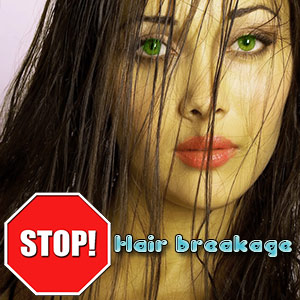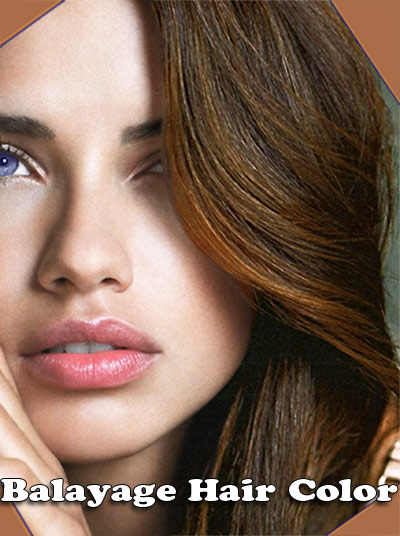Hair Weaving

Balding seems to be setting in a great deal early these days. At times, a man loses his hair in his 20s due to factors such as synthetic foods, medicines, vitamin deficiency and hypertension. Hair weaving is a cosmetic procedure that is often resorted to. Hair weaves can both improve a hairdo or offer a totally different appearance. Check out the hair raising facts on hair weaving, the technique adopted and its suitability.
Hair weaving
Hair weaving can be defined as the science of adding up of hair to the scalp by weaving or braiding of human hair or synthetic hair. This process is also referred to as hair integration or hair intensification. The additional hair is woven to the root region of the client's hair and as a result it grows along with the client's hair. The process of hair weaving is extra cosmetic than surgical.
The American Hair Loss Council recommends that only people with ample healthy hair should think about hair weaving, as it may result in initial hair loss due to the stress it exerts on the existing hair. These days there are various safe hair weave techniques available. Hair weaves are a type of hair extensions.
The build-up hair must be kept back just for a few weeks. The extensions ought to be relocated every five to six weeks as the hair grows. A few natural hairs are woven or braided collectively to operate as an anchor to which tufts are sewn, woven, knitted or glued. The anchoring has to be tightened from time to time as natural hair grows up. Forceful washing should be evaded as it could loosen the new hair.
The preference of hair whether human or synthetic, depends on the weaving procedure and the lifestyle of the person. Partial hair add-ons are a popular alternative for people with pattern hair loss. Hair weaving is also resorted to by people tormented from extensive hair and scalp diseases such as alopecia totalis, alopecia universalis and ectodermal dysplasia.
Hair Weave fiber types
Synthetic hair weaving: Synthetic hair is made from different synthetic fibers. Synthetic hair is available in weave (weft) and single strands. Nearly all hair makers do not advise synthetic hair for weaving as it does not last as long as human hair for the reason that it is inclined to get knotted too fast and easily curls into a wiry mass. Synthetic hair is much cheaper than human hair. Heating appliances such as curling irons and straightening combs must not be used on synthetic hair. Synthetic hair is formed into styles by means of boiling water. Costs of synthetic hair weaves can range from $10 to $20.
Human hair weaving: Most human hair that is used for weaves is derived from India and various parts of Asia. Human hair is habitually mingled with yak hair. Yak hair is coarser when compared to human hair and is used to supplement the human hair to make it cost effective. Yak hair has all the assets of human hair and can be curled, colored and relaxed with the aid of heating appliances. There are diverse grades of hair, the uppermost grade is called 'Remi' and is more often than not knot free. It requires the care that human hair needs. Costs of human hair weaves can range from $23 to $100.
Materials used for producing hair weave
- Thick thread to affix the hair weft firmly. This is usually selected in a color that goes with the color of the hair.
- A needle that is used for upholstery. It must be long and can be curved.
- Hair glue that is specially made for hair weaves. The glue used can usually be removed by washing hair with either a special shampoo or conditioner, without causing damage to the original hair.
- Hair extensions can be chosen depending on the thickness and appearance preferred. The weaving technique can make use of either hair wefts or individual strands depending on the requirement.
Hair weaving technique
Corn row technique: One of the best techniques of hair weaving is for hair to be sewn on to incredibly small corn rows. The stylist can use a heating appliance to fuse the hair sections onto very small segments of hair.
Corn row technique is the oldest hair weaving technique; it was introduced around the 1950's. To seam the hair, the hair should be braided into corn rows. The hair is firmly sewn in with the thread, going down every line just adequate so the wearer's hair won't get unfastened while the hair is pulled with different styles day after day. Begun at the bottom, hair is sewn horizontally transversely from one side to the other. Then the wearer can cut or style the hair according to the requirement.
V6-12 method: This hair weave technique is by all means similar to the corn row method but produces softer and smoother outcome. The usual lumps that may result from the corn row technique can also be kept at bay. This hair weaving technique is very cost effective too.
Bonding method: For people who don't want to wear a weave for more than a couple of weeks, this technique is a boon in disguise. The natural hair is parted and the weave hair is glued very close to it. The glue will source no damage if worn and removed under able guidance. Take care not to pour the glue straight on the scalp lest it clog the pores.
Basic cord tracking technique: This hair weaving technique is also referred to as pinch weaving or track locking technique. Thin tracks of hair are placed horizontally on the scalp and toughened with threads using lock stitch. The tracks are placed to tag along the natural hair outline. The tracks are taken close to the scalp to sew a weave piece. The weave piece is afterwards connected with the weave thread and the client's natural hair is combed to cover the thread. This type of weaving can be used on natural, permed and relaxed hair. Care should be taken to minimize stress on the hair that is on the scalp.
Invisible braiding: This is also referred to as the tree braiding. This hair weaving technique allows the hair weave to be fixed devoid of glue. Hair weaves are braided close to the scalp along with the client's hair. The natural hair provides leverage to the weave hair. Invisible braids are the best pick for people who desire to give their hair a break from chemicals. Synthetic hair is the best suited for this technique of weaving.
Christina method: This hair weaving technique is the most famous and offers a natural look. This method is best suited and recommended widely because it not only stimulates fresh hair growth but also protects the existing hair.
Fusion weaves: This hair weaving technique is the costliest among the lot and the most flexible among all the weave techniques available. There are no weave tracks to be hidden when this weave is used; the hair appears as though it is directly growing from the scalp. The human hair is matched with the client's hair and is then pasted with an acrylic hair adhesive.
Hair weaving - dos and don'ts
Anybody wanting to take up hair weaving process should get a patch test done to ensure that he is not sensitive to any glue used or further implants that might be used through the weaving procedure. You must keep away from hair weaving if you have thin lumpy hair. Hair and scalp should be kept clean after the weaving procedure; else it will result in hair fall. The hair needs to be treated gently and should be moisturized daily with a good conditioner. Keep in mind that natural hair receives all the required nutrients from the scalp whereas the weave hair does not. Till natural re-growth of hair is noticed, you must visit your hair dresser to fix your hair.
Top of the Page: Hair Weaving
Tags:#hair weaving #hair weaving technique #hair weave #human hair weave
 Hair Loss
Hair Loss Thinning Hair Remedies
Stop Hair Breakage
Damaged Hair Care
Scalp Psoriasis
Hair Loss Treatment and Hair Restoration
Female Hair Loss
Menopause and hair loss
Pattern Baldness in Women
Hair Weaving
Hair Frizz
Ingrown Hair
Hair Care in Winter
Hair Masque
Hair Detanglers
Hair Color
 Covering Grays
Covering Grays Balayage Hair Color
Blonde Hair Long
Red Hair Color
Brunette Hair Color
Hair Highlighting
Eclipting Hair Color
Different HairStyles
 Easy Hair Style
Easy Hair Style Virtual Hairstyle
Punk Hairstyle
Celebrity Hairstyle
Asian Hairstyle
Interactive Hair Style Gallery
Messy Side Braiding
Braid Hair Style
Updo Hair Style
Kid Hair Style
Bob Hairstyle
Hair Perm
Hairstyles for Long Hair
Curly Hair Style
Medium Length Hairstyles
Hair style Tips
 Hair Parting Tips
Hair Parting Tips Hairstyles to look Younger
Washing Hair
Faster Hair Growth
Hair Makeover
Curling Iron
Hair Accessory
Laser Hair Brush
Hair Gel
Hair Transplant
Hair Extension
Hair Mousse and Hairspray
Blow Drying
Hair Dryer
Cysteine Hair Treatment
Hair Straightening
Laser Hair Removal
Human Hair Wig
Dandruff Shampoo
Top of the Page: Hair Weaving
Popularity Index: 101,110

